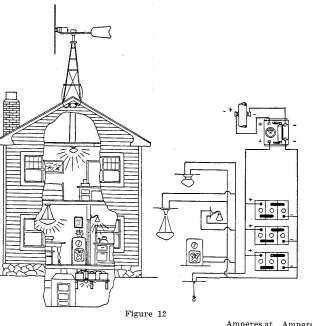Figure 12 shows how the batteries are connected to lights and radio. While the figure shows the arrangement for a 6 volt installation, the 12 volt connection would be similar except that the batteries would be connected in series as shown in Figure 9. Never connect any wires except those from the "Gen +" and "Gen -" terminals of the instrument panel. Connections for lights and radio should be made directly to the battery on separate battery clips. Never connect radio and light wires to the same clips used to connect the batteries and instrument panel, because if the radio and lights are connected to the same clips and one of the clips would become corroded or fall off the battery post, the radio tubes could be burned out.

Where there is not room enough to connect two battery clips to one battery post, a small hole may be drilled about one-half inch deep in the top of the post, and a 1 inch long brass wood screw can be screwed part way into the lead. This will provide room for the additional battery clips. Coating these connections with clean cup grease or vaseline will help to prevent corrosion.
The batteries collect the energy delivered by the generator, and deliver it to the lights and radio. Use good batteries. Worn out or sulphated "junkers" will not take a charge or hold it satisfactorily. They usually result in trouble. Large batteries can store and deliver more electricity per charge than small batteries. Likewise it requires more electricity to charge a large battery than a small one.
Battery sizes are usually figured from the size of the connected load. The battery drain chart below shows the number of amperes required to operate lights and radios.
| Amperes at 6 volts | Amperes at 12 volts | |
| Average radio | 2 to 3 | 1 to 2 |
| Each 15 watt bulb | 2 1/2 | 1 1/4 |
| Each 25 watt bulb | 4 | 2 |
| Each 50 watt bulb | 8 1/3 | 4 1/6 |
Batteries are usually rated in ampere hours. This is the product of the amperes load multiplied by the number of hours the load is carried. For example, a 25 watt, 6 volt bulb draws 4 amperes. If it burns for 10 hours, it drains 4 x 10, or 40 ampere hours from the battery.
| << Previous Page | Return to Home Page | Next Page >> |